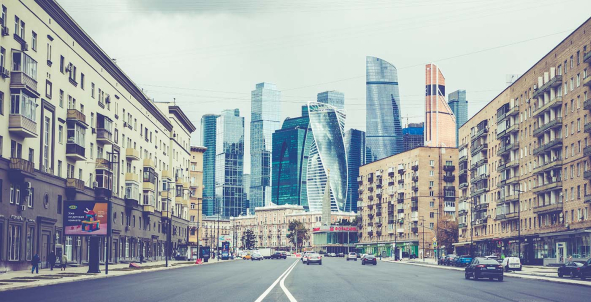| 09.03 | 10.03 | |
| € EUR | 95.7815 | 95.7815 |
| $ USD | 91.5836 | 91.5836 |
Moscow out 4 days
The price for one person, in USD
|
Accomodation, DBL/TWN/TRPL |
5 PAX |
10 PAX |
15 PAX |
20 PAX |
30 PAX |
40 PAX |
|---|---|---|---|---|---|---|
|
540 |
410 |
360 |
350 |
320 |
300 |
Upon your arrival you will be met by OST-WEST representative.
City tour of Moscow. Manezhnaya Square, The Cathedral of Jesus Christ the Savior, Poklonnaya Gora (Poklonnaya Hill), Kutuzovsky Prospekt (Kutuzov Avenue), Vorobyovy Gory (Sparrow Hills), Lomonosov Moscow State University, Bagration Bridge, The White House and etc.
Transfer to the hotel. Check in.
Free time.
The transport is given for transfer from the airport and city tour of Moscow.
Breakfast.
Meeting at the reception with OST-WEST representative.
Walking tour: Acquaintance with the Kremlin. The Kremlin is the main sacred place and attraction of Moscow. The supreme authorities of the country and priceless treasures of the Russian history, culture and art have always dwelled in it. Today, a residence of the President of Russia is situated here. The first record of the town of Moscow is dated to 1147. In 1339, Ivan Kalita erected the oak walls of the fortress and significantly widened the territory. In 1367, under Dmirty Donskoy, the timber walls were replaced by the walls made of white stone, and Moscow got the name of White-Stone.
The Diamond Fund of Russia is a collection of masterpieces of jewelry of the 18th-20th centuries, rare precious stones, gold and platinum nuggets of great historic, artistic and scientific importance, as well as vast material value. It is one of the few treasuries in the world that house unique crown jewels. Being part of the State Fund of Precious Metals and Precious Stones formed by the State Depository of Valuables (Gokhran) of Russia, the collection is on a permanent display at the exhibition of the same name situated on the territory of the Moscow Kremlin. The Diamond Fund dates back to the time of Peter I.
Lunch in a restaurant.
Walking tour: The Red Square and stroll around Kremlin. In the ancient times, the square was an important element of fortification: it was easier to give battle at an open space, and in peacetime the square could be used for trade. Originally, it was called Torg (Trade) and Pozhar (Fire). In 1661, Tsar Alexey Mikhailovich issued a Decree and renamed the square into Krasnaya (Red), since there was a road that ran through the square from the Ambassadorial Office to the Krasnoe (Red) Porch in the Kremlin. There is another version, as well: in ancient Russia «krasny» (red) meant «beautiful», «the best», and the «main». We will see Historical Museum, Nikolskaya Tower, The Kazansky Cathedral, The upper Shopping Arcade (GUM), St. Basil’s Cathedral, Lenin’s Mausoleum, The Lobnoe mesto (Place of Execution), a Monument to K. Minin and D. Pozharsky, Spasskaya (the Savior’s) Tower, The Taynitskaya (Secret Place) Tower, Vodovzvodnaya (Water-Lift) Tower, Bolshoy Kamenny (Big Stone) Bridge, The Borovitskaya («bor» means «pine forest») Tower, The Memorial of Military Glory of Unknown Soldier and the Eternal Flame.
Free time.
The transport is given for transfer to the Kremlin.
Breakfast.
Meeting at the reception with OST-WEST representative.
Walking tour: The Tretyakov Gallery. The State Tretyakov Gallery is the national treasury of Russian fine art and one of the greatest museums in the world. It was formed in 1856 and named after its founder, Pavel Tretyakov. Today its collection consists of about 160 000 works of art. The museum buildings are in the historic centre of Moscow, on Lavrushinsky lane.
Meeting Zamoskvorechye. «Novokuznetskaya» metro station - Pjatnitsky street - Clementovsky lane - Ordynsky deadlock - Lavrushinsky lane - Bolotnaya Square. The Zamoskvorechye District, located on the lower side of the river, has virtually undergone no reconstruction. The Moscow churches of the XVII - XIX centuries of various styles, the state chambers and the houses of famous Moscow merchants preserve the image of that Moscow, which is known to us by the works of A. N. Ostrovsky.
Lunch in a restaurant.
Walking tour: Arbat. When we say Arbat, we keep in mind not only a street but the dozens of adjacent lanes. It was first time mentioned in the 15th century, and the name originated either from Russian «gorbat» (humpbacked), or Tatar «Arba», or Arabian «arabad» (outskirts).
The transport is given for transfer to the Tretyakov gallery and to the Arbat.
Breakfast.
Free time.
Meeting at the reception with OST-WEST representative. Transfer to the airport.
The transport is given for transfer to the airport.
- The Touroperator can change the order and time of excurtions in the programm, keeping all listed excurtions in the programm.
- The comission for touristic companies - 10%











